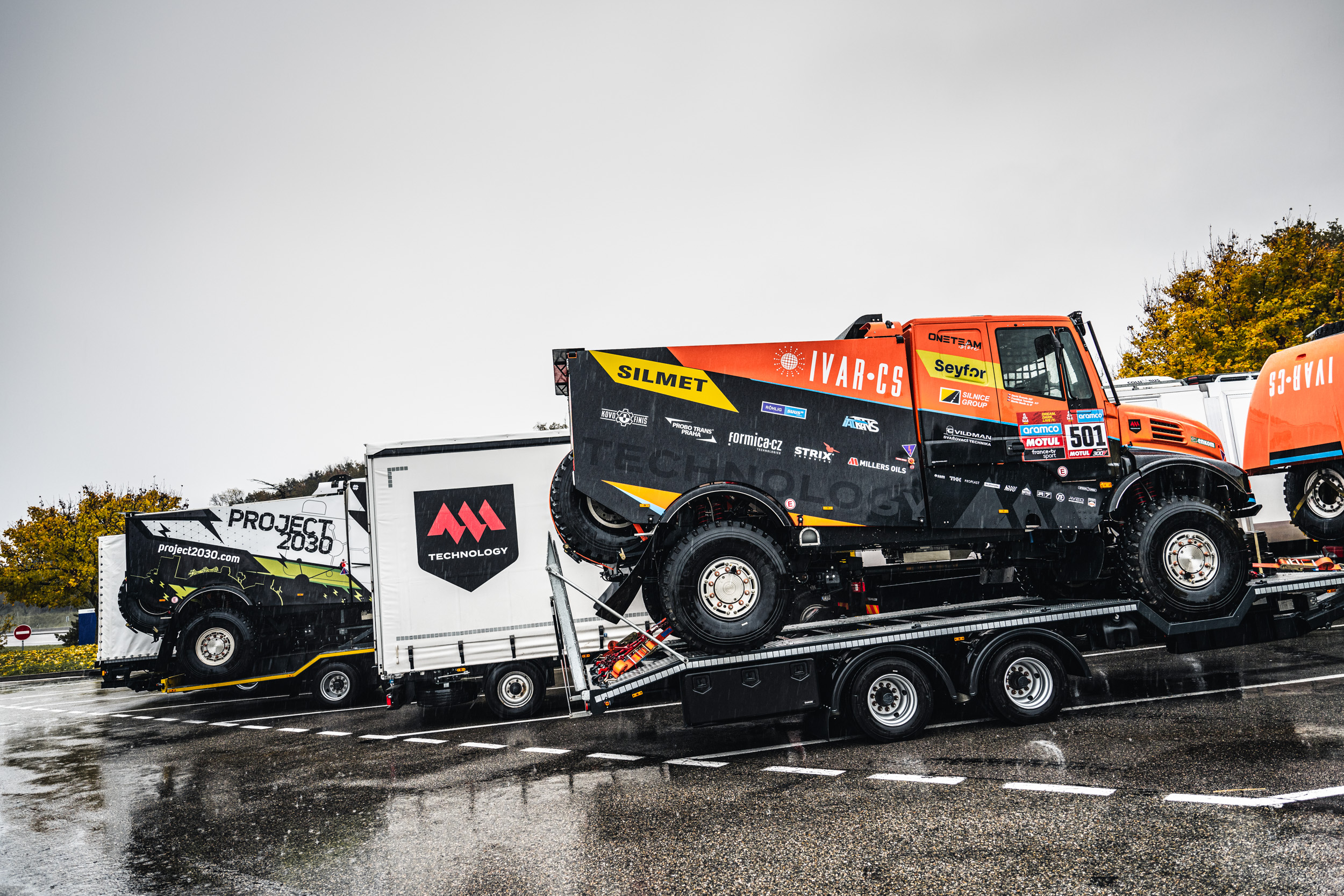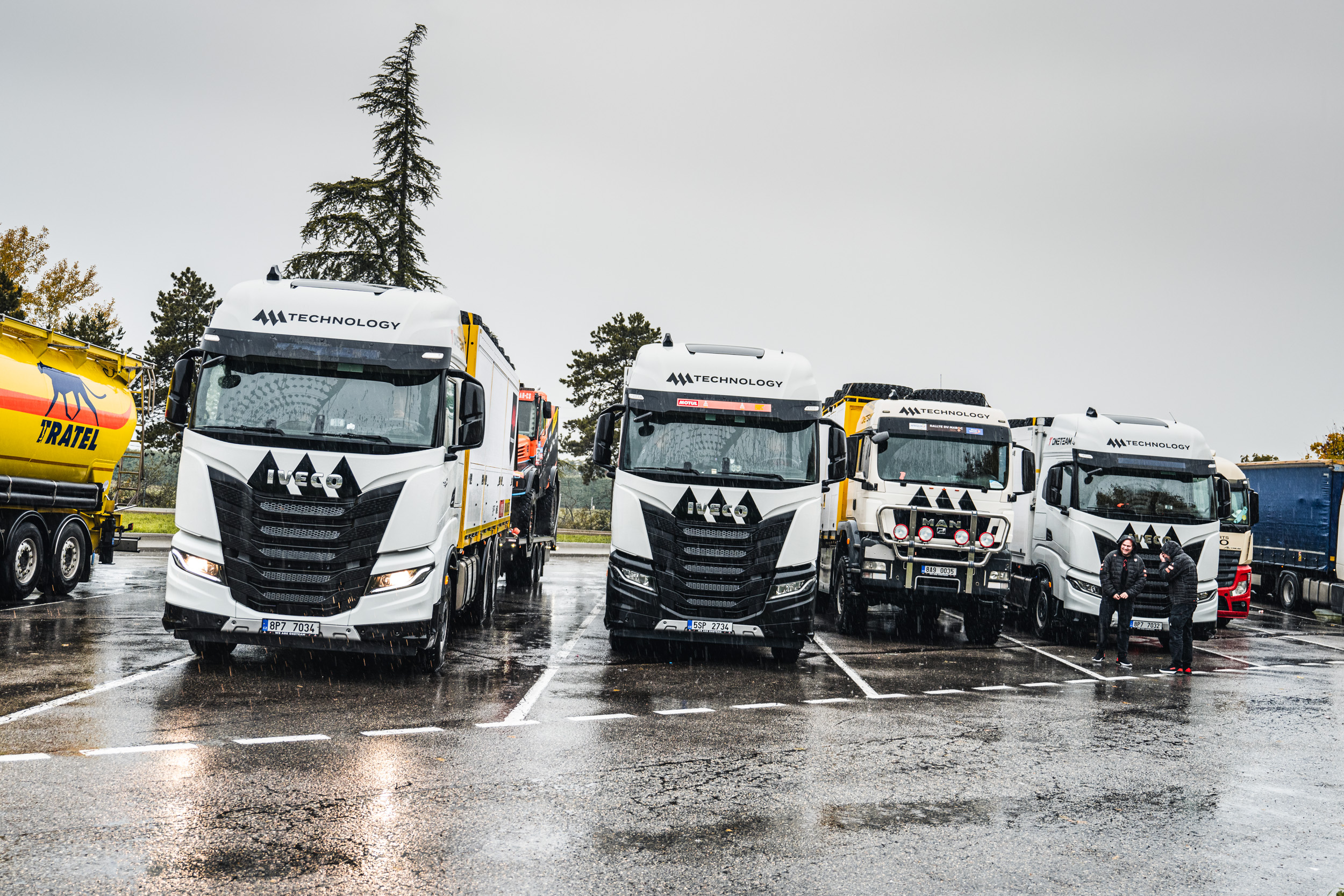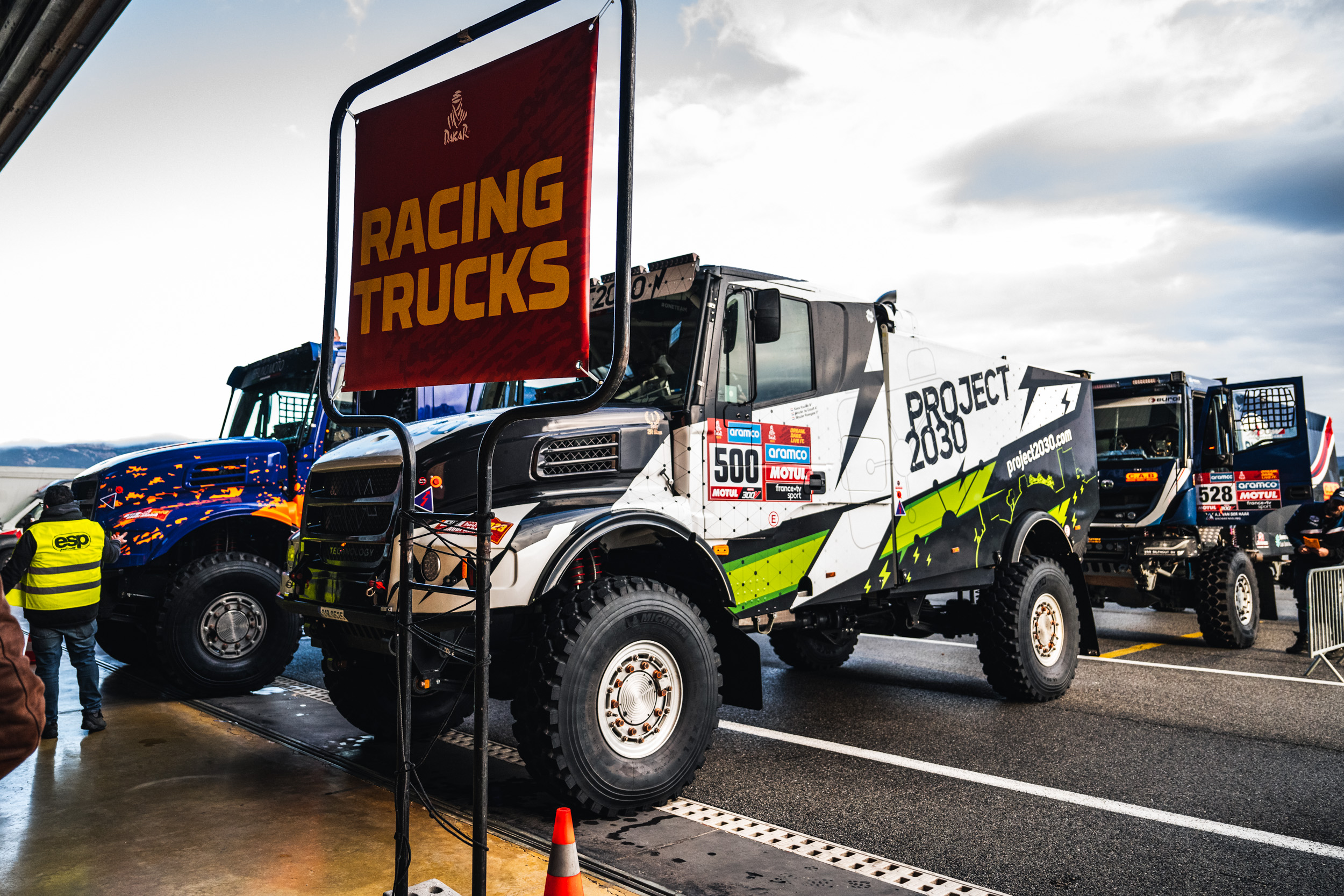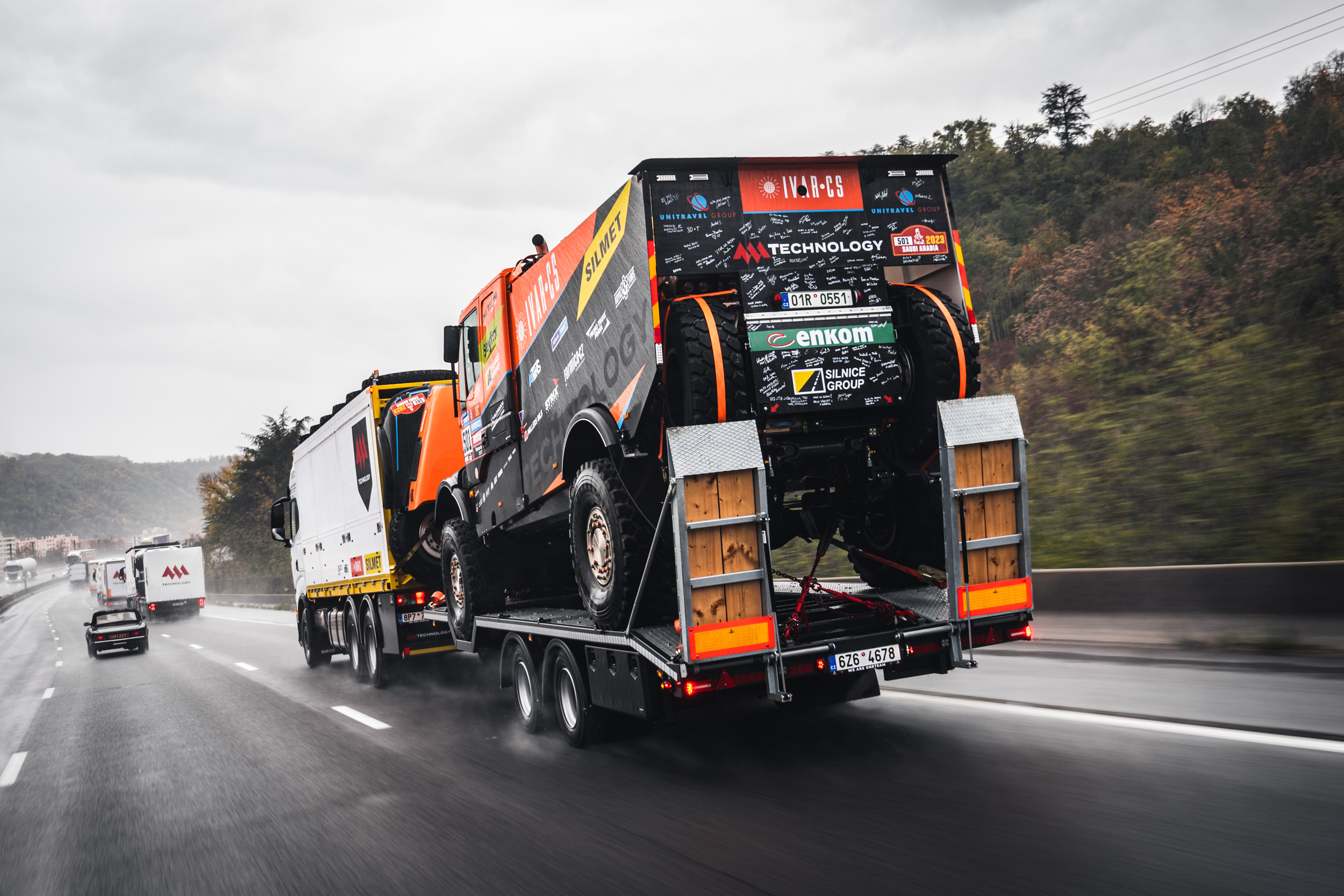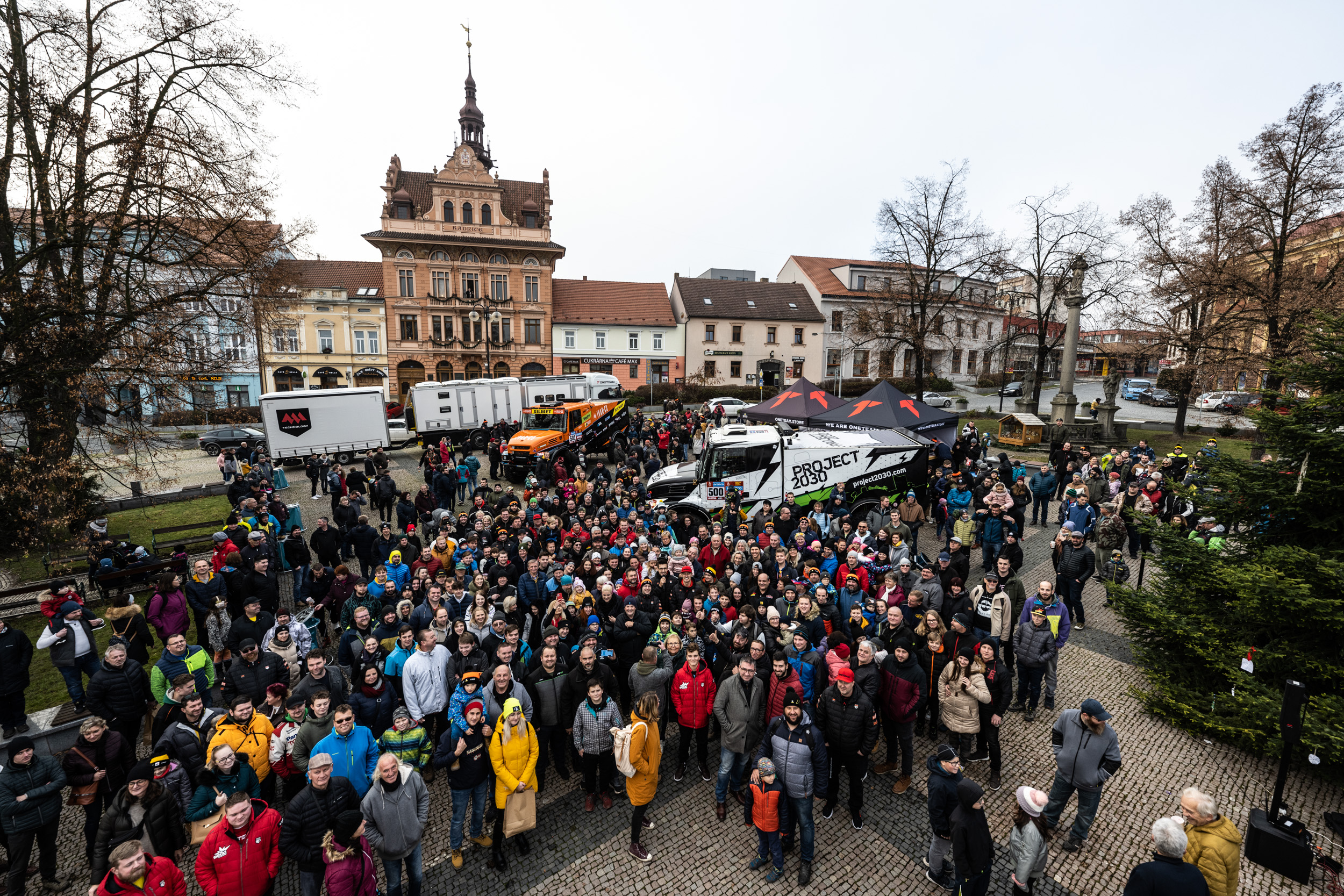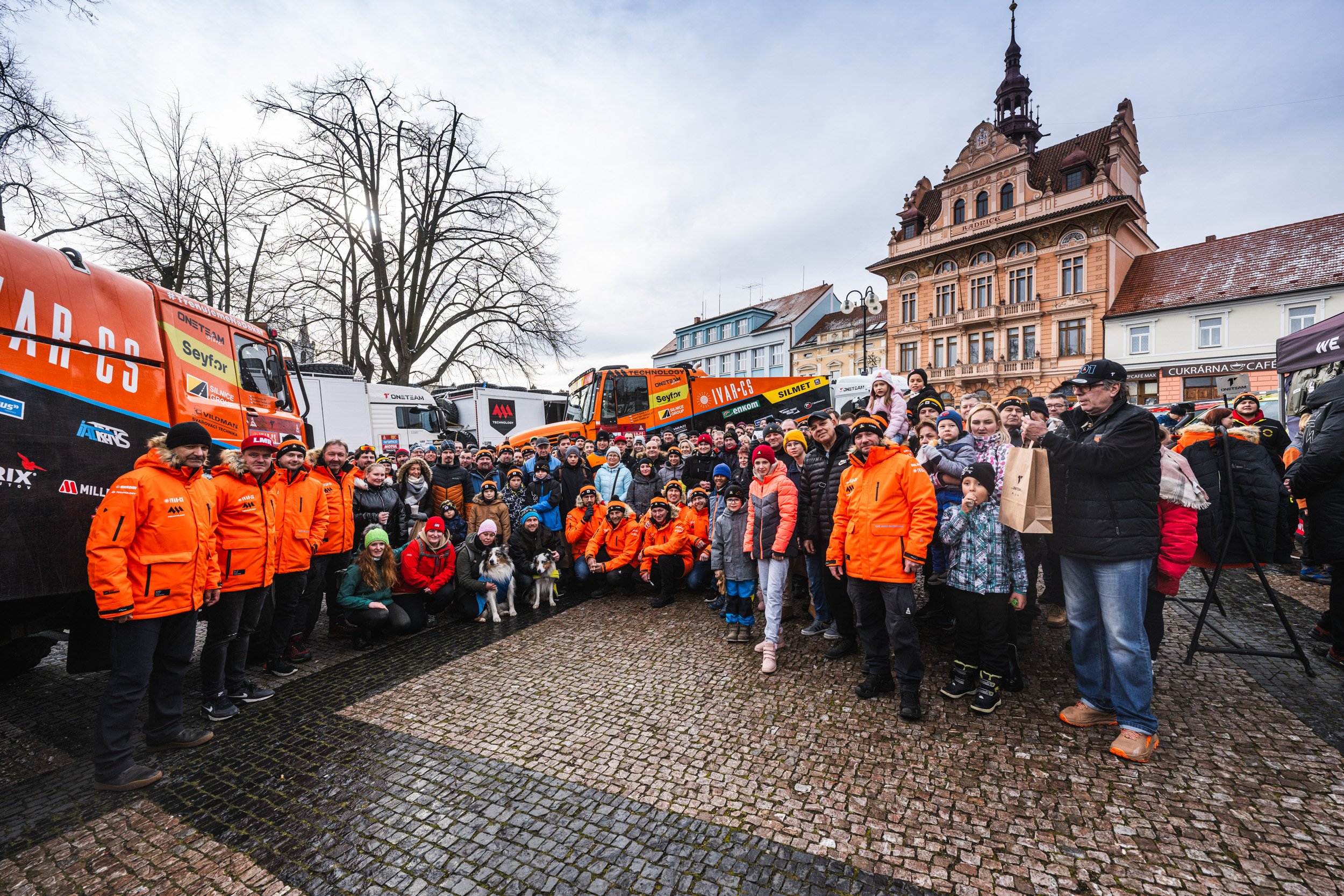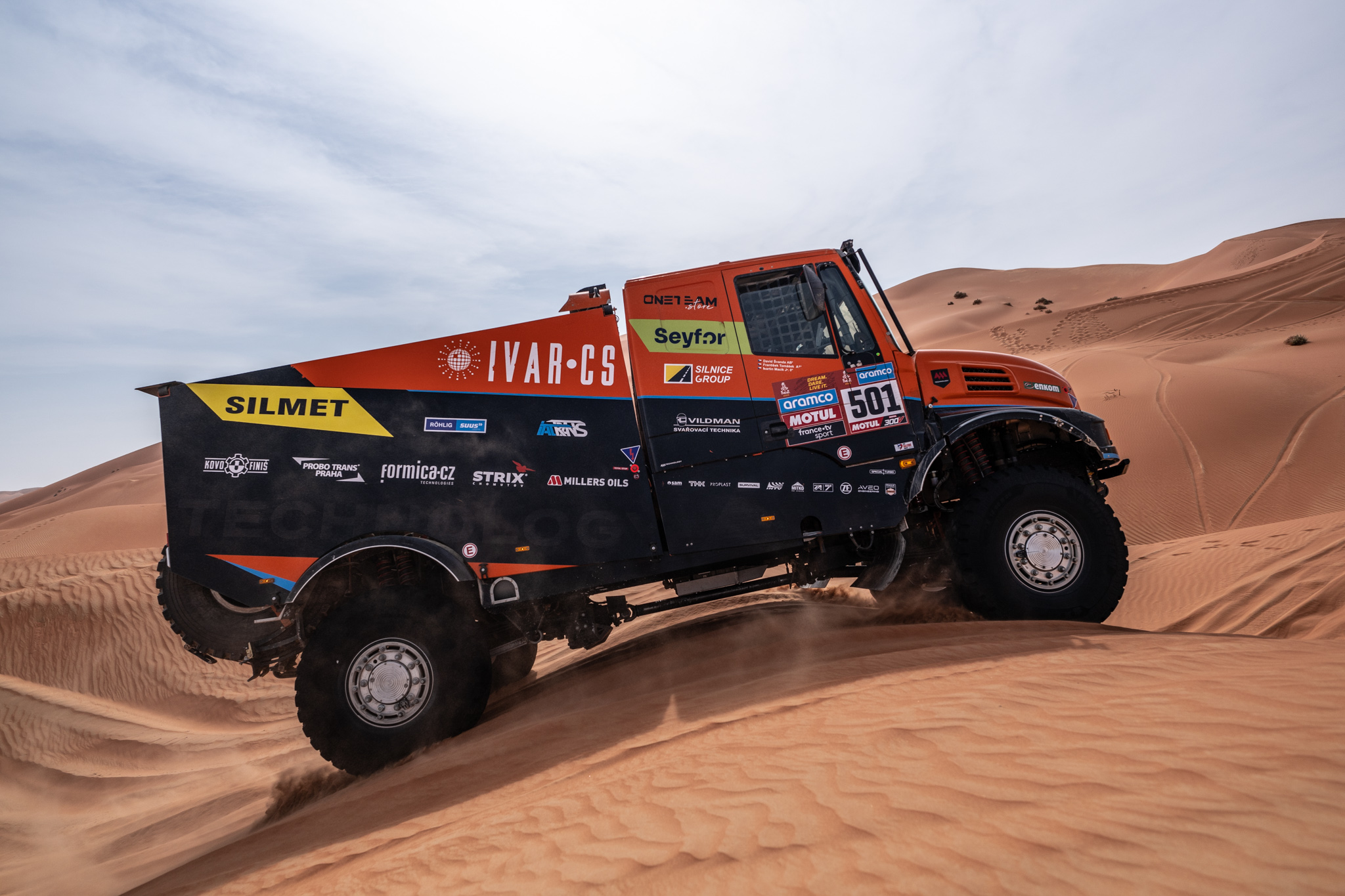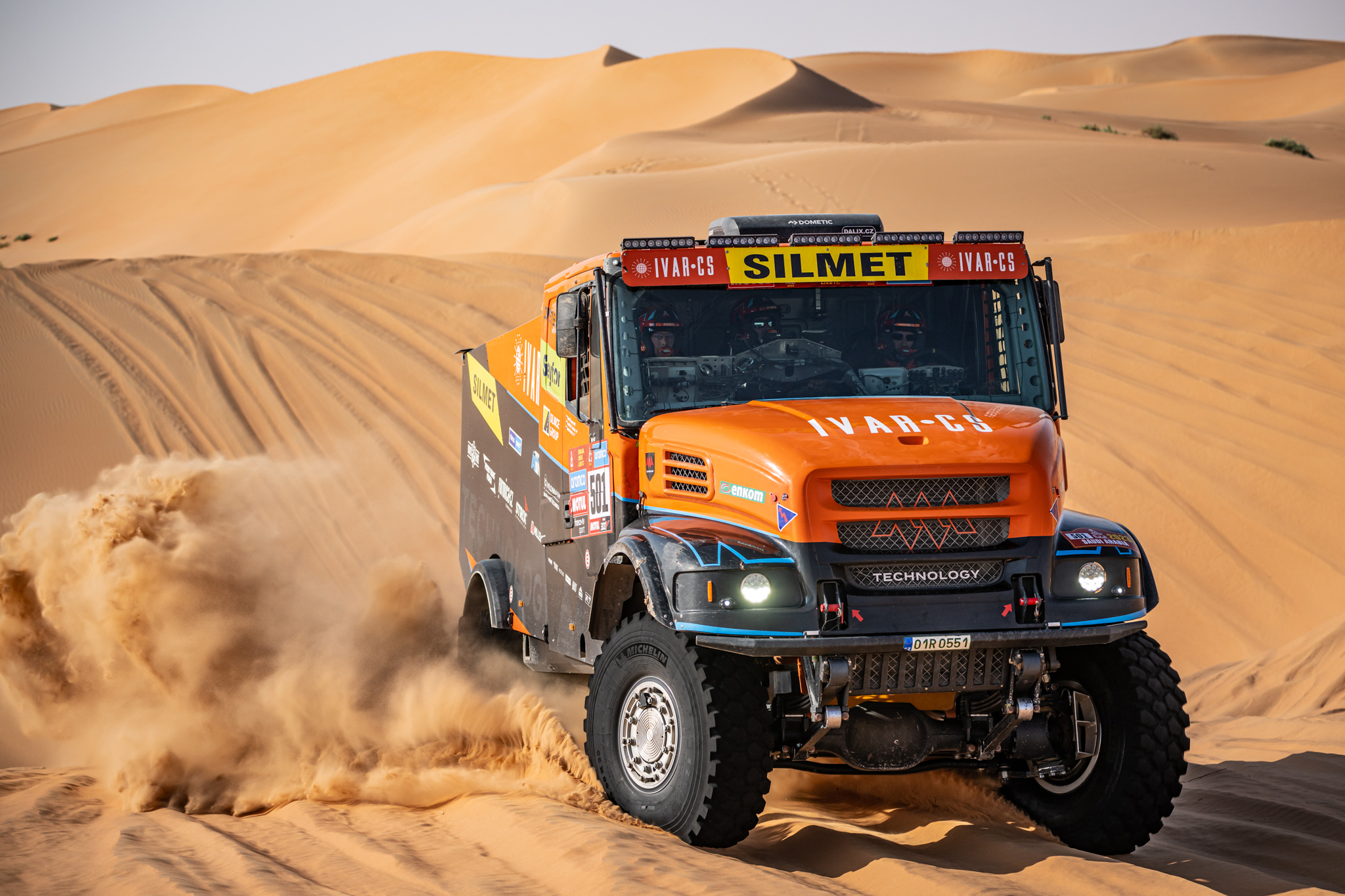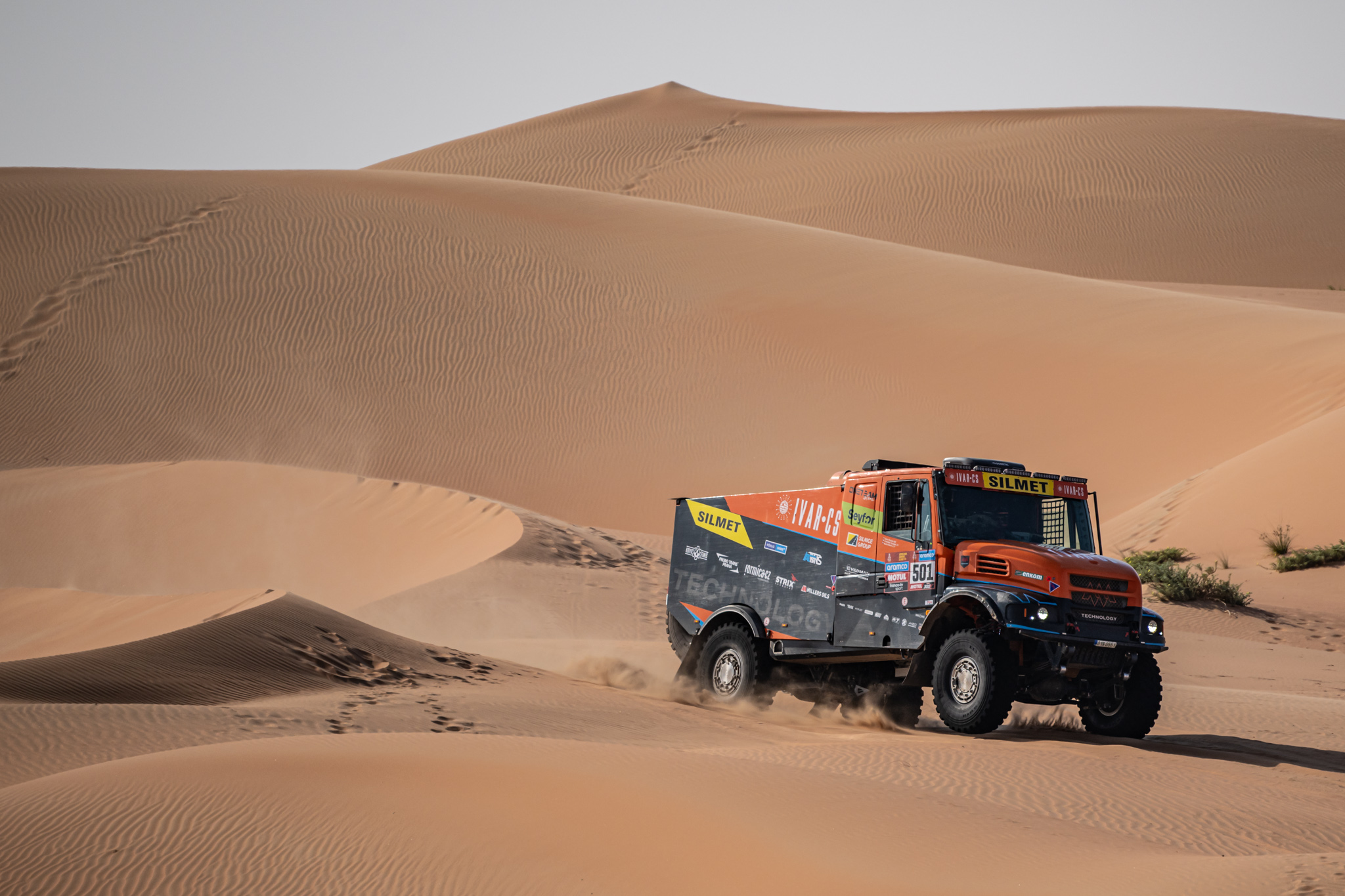The 2023 Dakar Rally is already under way. Pilot Martin Macik’s new truck named Cenda has successfully passed scrutineering in Marseille and is sailing to the shores of Saudi Arabia together with other racing and accompanying vehicles. It has a special fan-made design on the rear hood and it‘s headed for one of the toughest Dakars we have seen in years. The organizers have confirmed that this year‘s route will lead through the yet undiscovered dunes of the Empty Quarter in which the marathon stage will also take place. What does Martin Macik say about the newly revealed information?
The fans came to sign Cenda
Even before all the vehicles left for Dakar fans flocked to Sedlcany to personally say goodbye to Cenda, Martin Macik and other members of the MM Technology team. The atmosphere in the square was very warm and chirpy despite the freezing weather thanks to hundreds of Dakar lovers who came to wish the team luck. The racers signed and handed out stacks of photo cards but this time the fans were also the ones doing the signing. They got the opportunity to immortalize their name on Cenda‘s hood and thus symbolically accompany the crew during Dakar. The fans could also wish luck to accompanying vehicles and Nicias – a truck built in Sedlcany for Project 2030.
Hard work in the workshop means easy pass through scrutineering
The caravan of vehicles of the MM Technology team set off for Marseille directly from Sedlcany square. “For the last few weeks the guys and I have been at the workshop almost non-stop in order to perfectly prepare the machinery for Dakar,” says on-board mechanic David Svanda. The mechanics gradually took care not only of Cenda and Nicias but also other trucks that were built by MM Technology and that will participate in this year’s Dakar Rally – Jenda (which was produced for Italtrans Racing) and Arnold of the Firemen Dakarteam. At the same time they were also preparing 3 IVECO service cars, a camper van, 6 press cars and 2 caravans. The Sedlcany caravan headed for Dakar scrutineering also transported the motorcycle of David Pabiska. The crossing to Marseille seemed almost like a trip for everyone. The caravan briefly stopped at the farm of French friends where they temporarily stored a flatbed truck and then they headed to the town of Castellet near the Circuit Paul Ricard where the organizers of the Dakar Rally held the technical and administrative scrutineering.
From Sedlcany to Marseille, then off to Yanbu by ship
The team from Sedlcany spent the night before the scrutineering in the vehicles and in the morning it was straight down to business. “They check whether the racing machinery complies with the technical regulations, the engines are sealed, the navigation systems are installed, the trucks are weighed, measured, stickers are added, the organizers also check the safety equipment – helmets, homologation of the fire-resistant clothing of the crews. And there are also administrative requirements,” says David Svanda. Everything was done and dusted by noon. “The scrutineering went relatively smoothly. No major issues. We lacked OK and SOS signs. They were there, they disappeared, that happens, we have to add them. The most exciting time was when my dad and I got lost while crossing from customs to the port of Marseille. We arrived dead last. We handed over the trucks to the organizers and by that all was done. Hopefully everything is there and we haven’t forgotten anything,” said Martin Macik. The ferry filled with racing machinery will sail to Yanbu, Saudi Arabia for approximately 14 days. Already on 29th December the competitors will pick up their machinery and go through the second part of the scrutineering.
Expectations are fulfilled, extreme Dakar awaits us
Meanwhile the organizers have revealed the route of the upcoming Dakar Rally. Martin Macik with Cenda (which is decorated with starting number 501) and accompanied by 364 other vehicles (including 54 trucks) will set out on a course almost 5,000 racing kilometers long. 15 demanding racing days await the competitors – a prologue and 14 stages. Two more than last year. The crews will finally go on a trip to the yet undiscovered dunes of the Empty Quarter where they will spend 4 days and drive for 8,549 km (4,706 racing km). A marathon special (11th and 12th stage) will also take place in the sands of one of the largest deserts in the world. “Expectations have been fulfilled. It will be a tough rally from the very beginning. I think we are in for one of the most challenging Dakars in history. Right at the beginning we have several stages over 400 km long and the rest day has been moved to the second part of the rally. Additionally the terrain will change frequently. But most importantly there’s the marathon stage in the Empty Quarter at the end. You can get stuck there for hours. The trucks will be tested to the limit. It will hurt. It will not be easy. But I’m happy and I’m really looking forward to it,” says Martin Macik.

